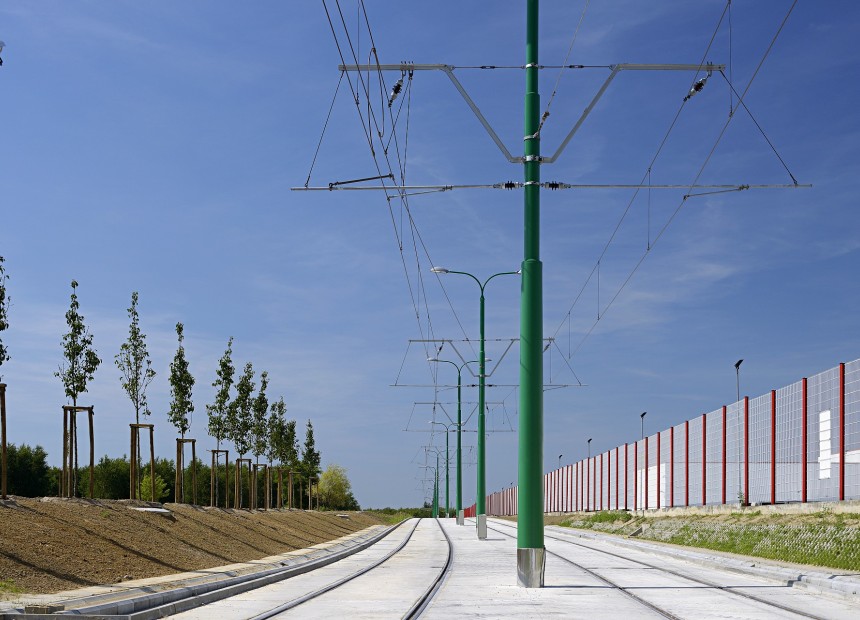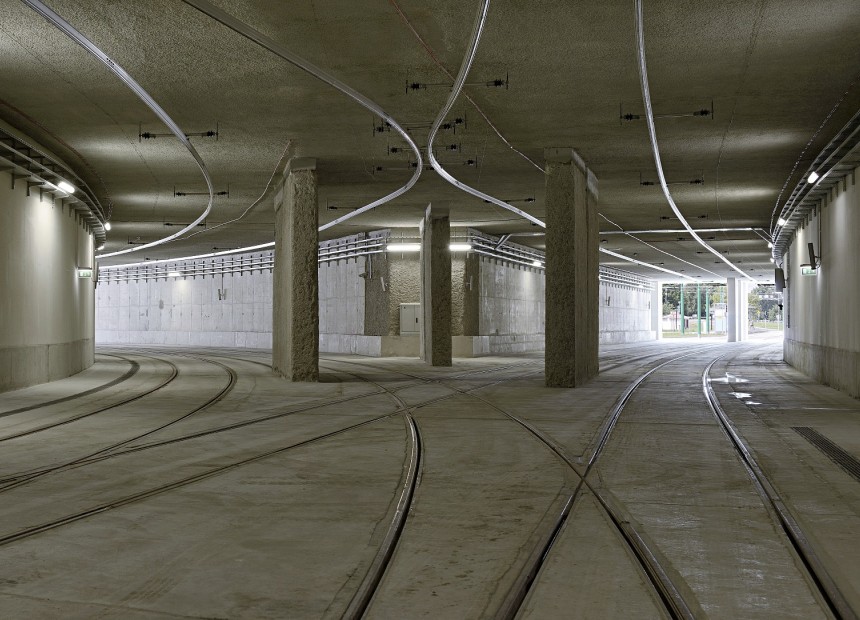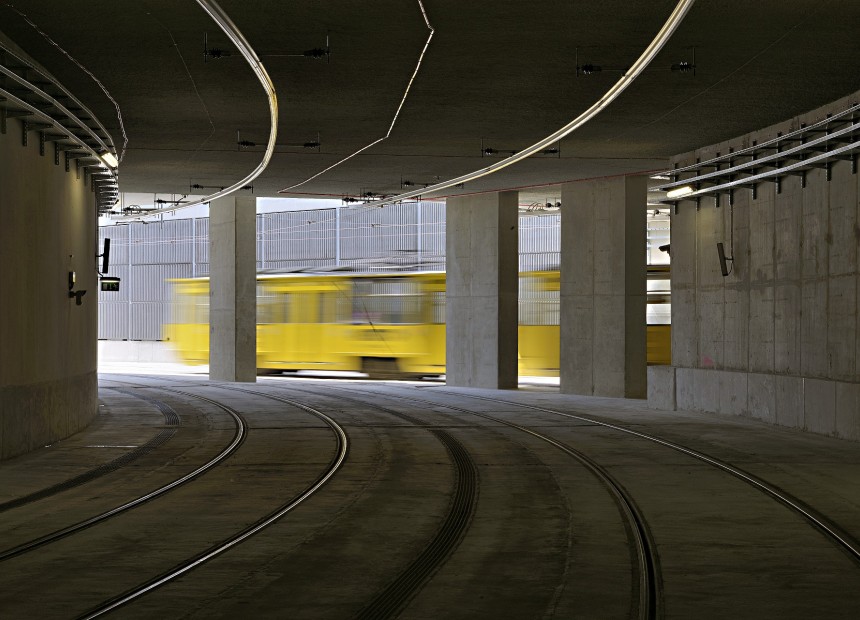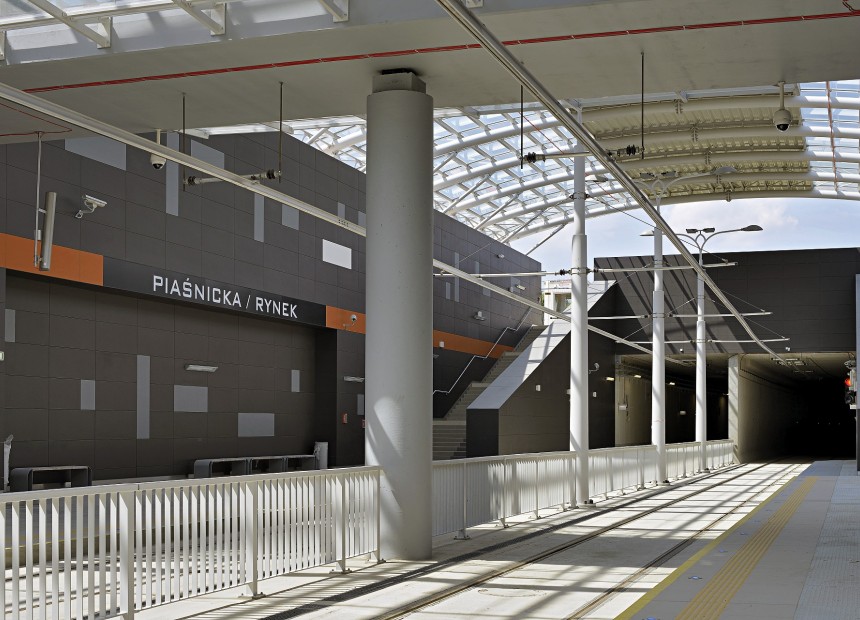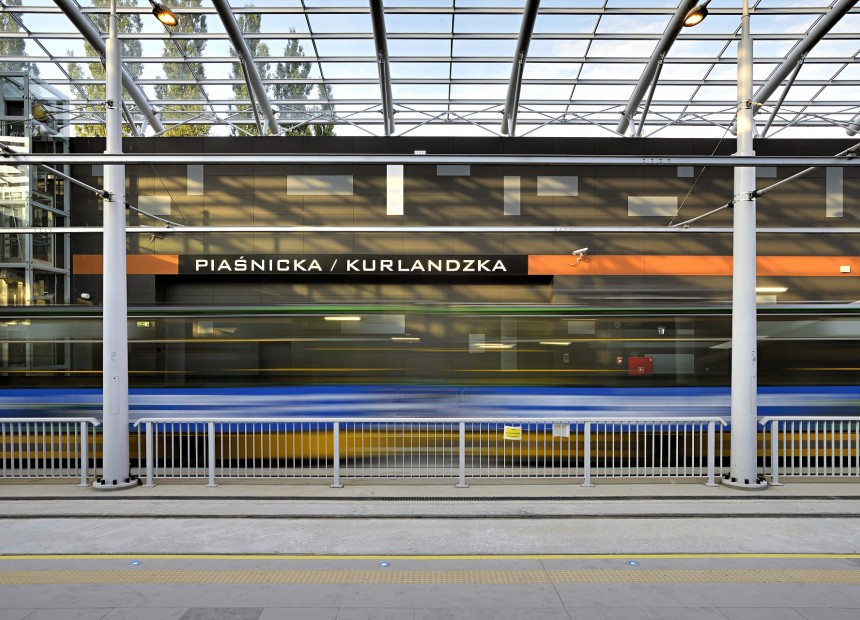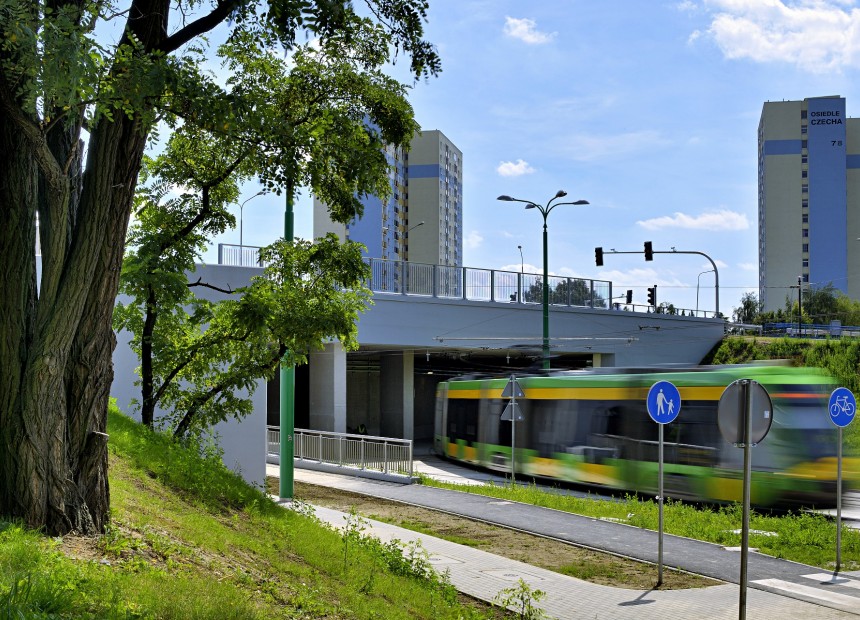This project was executed by the consortium of PeBeKa, Bilfinger Berger Budownictwo, and ZUE “Kraków" in the south-eastern part of Poznań. One of the major objectives of the project was to improve the public transport system in Poland's fifth largest city before the EURO 2012 football tournament.
The Lecha Estate-Franowo tramline in Poznań
Investor: The City of Poznań - The Municipal Transport Authority in Poznań and the company Infrastruktura Euro Poznań 2012 Sp. z o.o
Time of project execution: 2010-2012
Additional technical data:
- height measured from the lowest level of the platform to the highest point of the covering;
- length: 85.3 m / width: 25.32m;
- cubic volume: 22727,33 m3;
- the platform depression from approximately 4.50 m to 6.90 m with respect to the level of the ground at the descents;
- length of the tunnel together with the stops: 1067.2 m;
- free width of each chamber: 5.2 m;
- free width between the diaphragm walls: 11.6 m;
- free height from the railhead: 5.0 m;
- thickness of the diaphragm walls: 0.8 m;
- thickness of the middle dividing strip: 0.4 m;
- horizontal clearance: 10.8 m;
Location
Poland, wielkopolskie Province,
Poznań,
Project outline
The Lecha Estate – Farnowo tramline was one of the infrastructural projects carried out within the scope of the “Infrastructure EURO Poznań 2012” programme. The objectives of the project included connecting the new tram depot in Franowo with the existing tramline network, improving the efficiency of the whole public transport system in Poznań, and extending the public transport system to cover the areas along Piaśnicka Street and Kurlandzka Street as well as the M1 and IKEA shopping centres by connecting the said areas with the city centre by means of a fast tramline.
Within the scope of the contract, PeBeKa employees performed a part of the construction works related to the building of the “Kurlandzka - Piaśnicka” stop and a tunnel together with an exit ramp. This single-storey facility with a rectangular floor plan fulfils the function of a tram stop with two platforms. The two-cell tunnel is divided with a middle dividing strip made of reinforced concrete. The structure of the exit ramp is based on the diaphragm wall technology.
Greatest challenges
Excavating the tunnel with the length of more than 1000 metres and removing 150 000 tonnes of soil in about six months.
Key moment
Erecting the tunnel's structural system based on the diaphragm wall technology.


